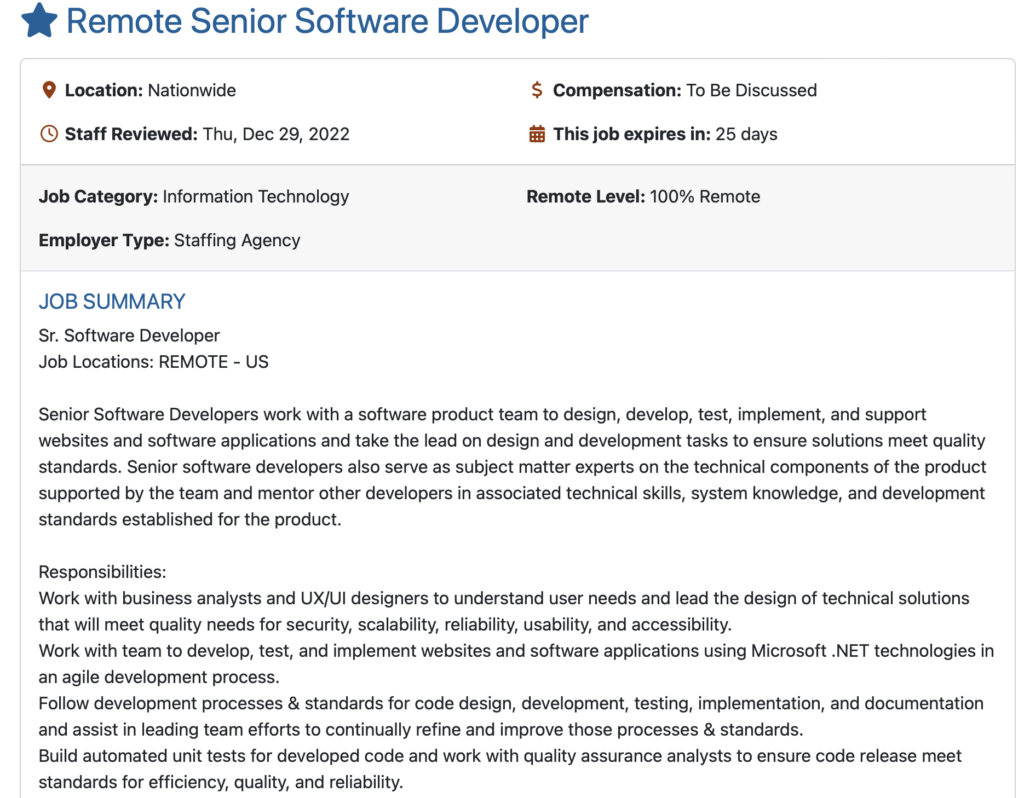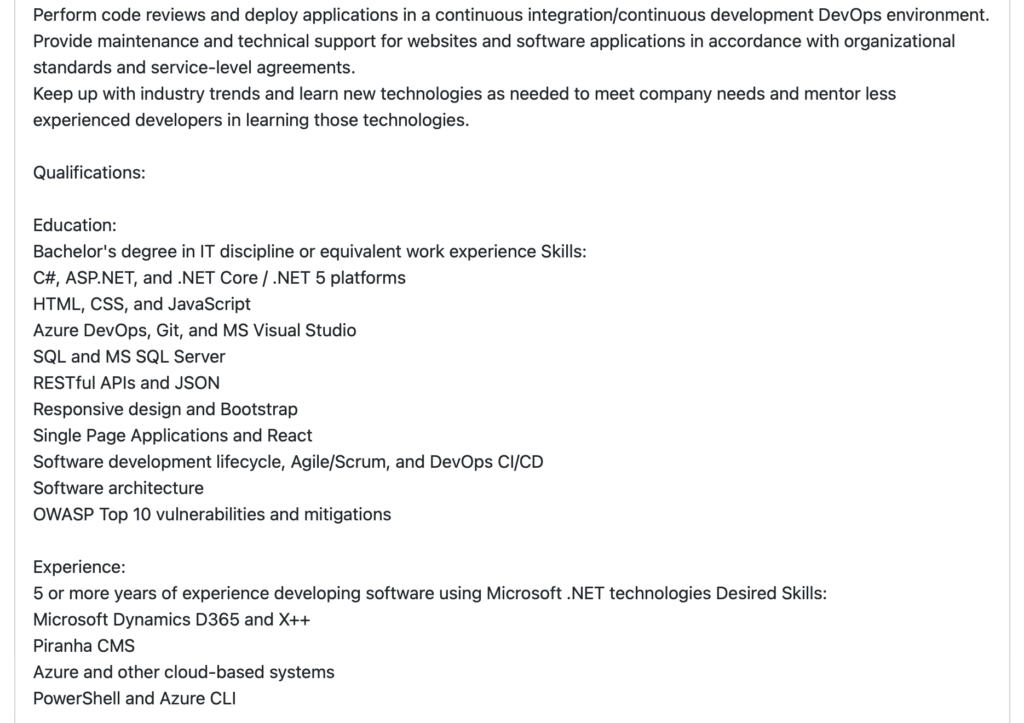Talent management is the process of attracting, developing, and retaining talented employees. If you’re looking to reduce employee turnover and improve the quality of your workforce, Austin Andrukaitis of ChamberofCommerce.com offers these five tips for you.
Did you know that over 41 million U.S. employees left their jobs for “greener pastures” in 2018 alone? These employees range from essential staff down to the newcomers on the block. In that same year, U.S. employers reportedly paid $600 billion in turnover costs.
Employee turnovers like this reduce organizational productivity and force companies to find recruits to fill vacant positions. However, recruiting new candidates is not only costly and time-wasting; there’s the issue of losing top talent as well. This loss creates a gap in the skills and experience required to work for the company at particular growth stages.
Luckily, talent management can help you reduce employee turnover and boost employee retention. This is especially critical in modern remote workplaces where employees can secure great jobs from different companies while living a digital nomad life. This article discusses how you can leverage talent management to reduce employee turnover and keep high performers in your company.
1. Craft a Detailed Job Description
The onboarding process is a crucial aspect of remote talent management. Your goal is to hire the right people for the job. That begins with a clear-cut description of what the job entails. The Harvard Business Review reported that 30 percent of employees leave their jobs within the first three months of employment, mostly because their assigned tasks didn’t match the job description.
At the bare minimum, a job description should include the following:
- Job title: This should be straightforward. If you’re hiring for an email marketing specialist, be specific instead of using “digital marketer” in the job ad.
- Job location: This matters to candidates, especially those who prefer working remotely. Specify the work environment your company provides. If the employees will be required to come to the office at certain times, mention it. Don’t just promote the job as a remote position to attract more candidates if you know they’ll be expected in the office at certain times.
- Skills and experience: List only those that are relevant to the job.
- Job duties and responsibilities: These include a list of tasks to be performed, their frequency, and the size of the team if you’re hiring for a people manager.
- Salary range and benefits: Be forthright about the compensation and benefits package. If the offer letter indicates a far lower amount than the one in the job ad, you’ll have a hard time hiring the most qualified candidates.
Whether you’re starting an online business, a brick-and-mortar store, or are hiring within an established organization, these pieces of information set the foundation for remote talent acquisition and determine the quality of employees you recruit from the get-go. It also paints a picture of what the applicant is getting into and the expectations of the job.
Here is an example of an excellent listing on Virtual Vocations for an open remote position. The employer provides all the details a candidate would need to determine whether they are qualified and if it’s a good fit for them. From the job category to the summary, responsibilities, qualifications, and experience.


A modern recruitment marketing strategy with a detailed job description helps you attract the right talent. It streamlines your recruitment process too. But more importantly, it sets the right expectations for potential employees. That’s the first critical step to retaining top talent.
2. Mention Growth Opportunities
Most employees see themselves progressing from one career stage to the next. If your company can make that vision a reality, your employees are more likely to stay. To improve remote employee retention, start by creating avenues for employee growth and career development, such as prioritizing internal candidates for management positions. Promoting from within tells your employees they can grow within your organizational environment.
You can also cultivate a culture of career development by creating a career map for your employees. A career map identifies the employee’s current position, where they want to be within a definite time frame, and how they can get there. It usually states the requirements for climbing up the ladder in the company.
There are four simple steps to creating a career map. You need to:
- Point out the entry-level position
- Determine the ultimate goal
- Outline the steps or stages that bridge the two points
- Set smaller tasks with the different stages to smoothen and fast-track the process
You can also provide learning opportunities for your employees. Talk with your employees to identify their interests and invest in items like online courses. Not only does this help retain them, but you also get to improve their skills, which will benefit your company.
3. Undertake Performance Appraisals
A performance appraisal is a conversation between you and your employees. Here, you evaluate your employee’s performance against predetermined objectives. That can significantly boost employee productivity and, in turn, employee retention.
It’s worth noting that performance appraisals here don’t refer to the traditional objectives-results type of appraisal. Instead, it’s more about talking with your employees consistently than talking about them. The most successful companies know and utilize this fact.
For instance, Facebook undertakes semi-annual performance appraisals targeted toward peer-to-peer and employee-to-superior feedback. They also use internal software that allows both employers and employees to give real-time feedback between the appraisal cycles. This technique ensures there’s continuous feedback between employees and superiors.
Microsoft also has a bi-monthly appraisal cycle where employees and managers can discuss career development, organizational goals, and more. Plus, these appraisals come with rewards. According to Lisa Brummel of Microsoft, “Our new approach will make it easier for managers and leaders to allocate rewards in a manner that reflects the unique contributions of their employees and teams.”
This type of performance appraisal is especially critical in a remote workplace. And it must be done frequently. Remember, your employees are distributed across different locations. You must engage them regularly to maintain higher remote employee engagement and a generally pleasant employee experience. This is vital if you want to keep your top remote talent.
4. Carry Out Employee Training
Consistent appraisals and reviews provide you with data on the performance and productivity of your employees. You can use this data to identify employee skill gaps and work on bridging the gaps for each employee. For instance, you may run a management training that teaches select employees how to oversee a group and equips them with skills for managerial roles. That is essential for companies that promote employees within their organization to managerial roles.
Having an L&D (learning and development) department is also a good idea. These departments focus on upskilling your employees and equipping them with necessary skill sets, even for entirely new roles.
Bonobos, for example, offers a course on “managing for success,” where employees are taught the requisite management skills for managerial roles in the company. They also offer courses like “how to manage up well,” where the current managers coach select employees into more supervisory roles.
Even their customer service representatives take a course in “knowing your customer.” Here, the representatives learn strategies to build effective customer relationships and provide excellent customer service. Upskilling allows the company to meet evolving business needs, increase employee engagement, and consequently reduce employee turnover.
You can go further by helping employees pursue industry areas of their interest. One way to do this is to offer aid or a budget to take a course or attend a conference concerning the employee’s interest. Combining training with your appraisals and career map will undoubtedly reduce employee turnover.
5. Improve the Working Environment
Another way to use talent management to reduce employee turnover is to create a conducive work environment for your employees. That includes employee work schedules, health benefits, and embracing diversity. You can provide flexible work schedules, for example. But it goes beyond that.
According to Gallup, there are six things employees want in their next job:
- Increase in income and benefits
- Greater work-life balance
- Opportunity to do what they do best
- Greater stability and job security
- COVID-19 vaccination policies that align with beliefs
- Organizational diversity
That implies that providing these things in your company will reduce employee turnover and attract new candidates. The key to improving the work environment is to listen to the needs of your employees and make great strides to address those needs. Ultimately, a better work environment reduces employee turnover.
In Closing
Employee turnover can be very costly to a company. You run the risk of losing competent staff members and years of experience. What’s more? Employee turnover breeds more employee turnover.
Luckily, you can employ talent management to reduce employee turnover. The talent management strategies discussed above go a long way in retaining competent employees and improving the overall performance of your company. Give these strategies a try, and watch your revolving doors slow down drastically.

Author Bio
Austin Andrukaitis is the CEO of ChamberofCommerce.com. He’s an experienced digital marketing strategist with many years of experience in creating successful online campaigns. Austin’s approach to developing, optimizing, and delivering web-based technologies has helped businesses achieve higher profit, enhance productivity, and position organizations for accelerated sustained growth.

Join Virtual Vocations
Joining Virtual Vocations grants you access to our hand-picked remote jobs database. Learn how our service works, browse job leads by location and career category, or search hundreds of hand-screened remote jobs to find legitimate work-at-home job leads that match your skills and background. Register for free or contact us for more information on our service guarantee.
Check out our menu of Career Services provided by our team of certified professionals, including resume and career coaching services for remote jobseekers. Resume assessments and writing, LinkedIn profile enhancement, and cover letter writing are available to maximize the success of your remote job applications. Discounts on all services available to subscription members, become one now.







